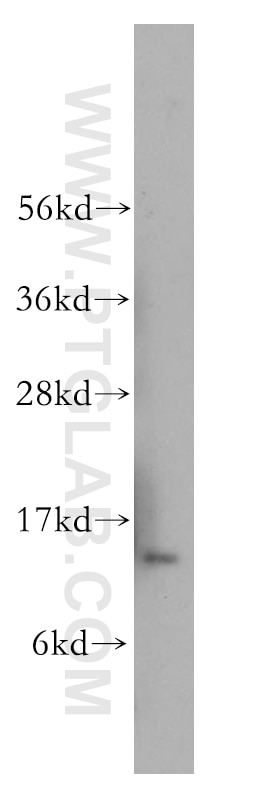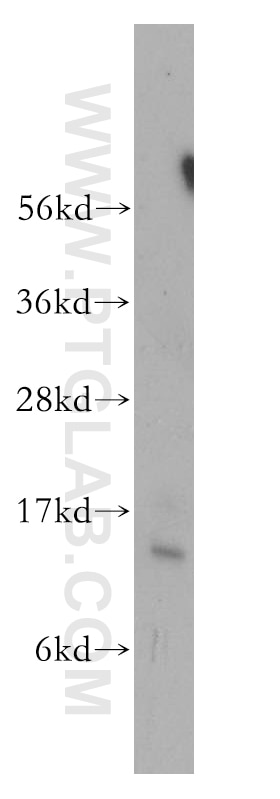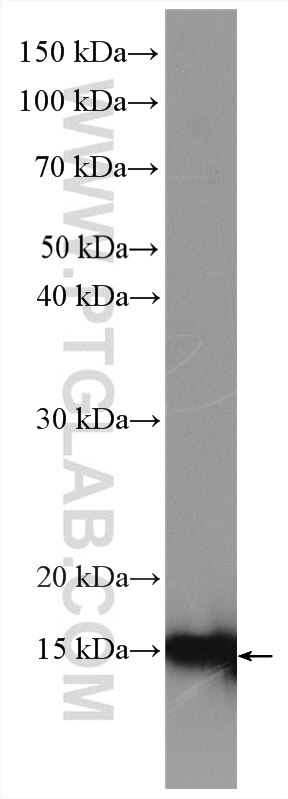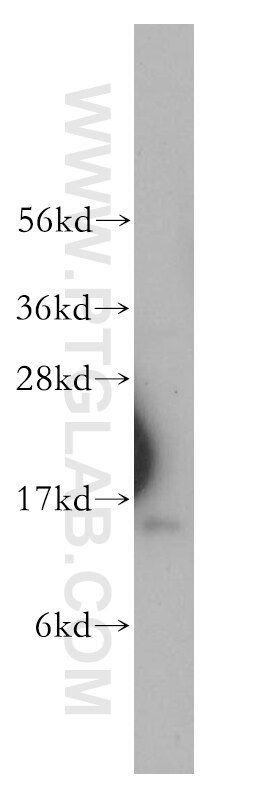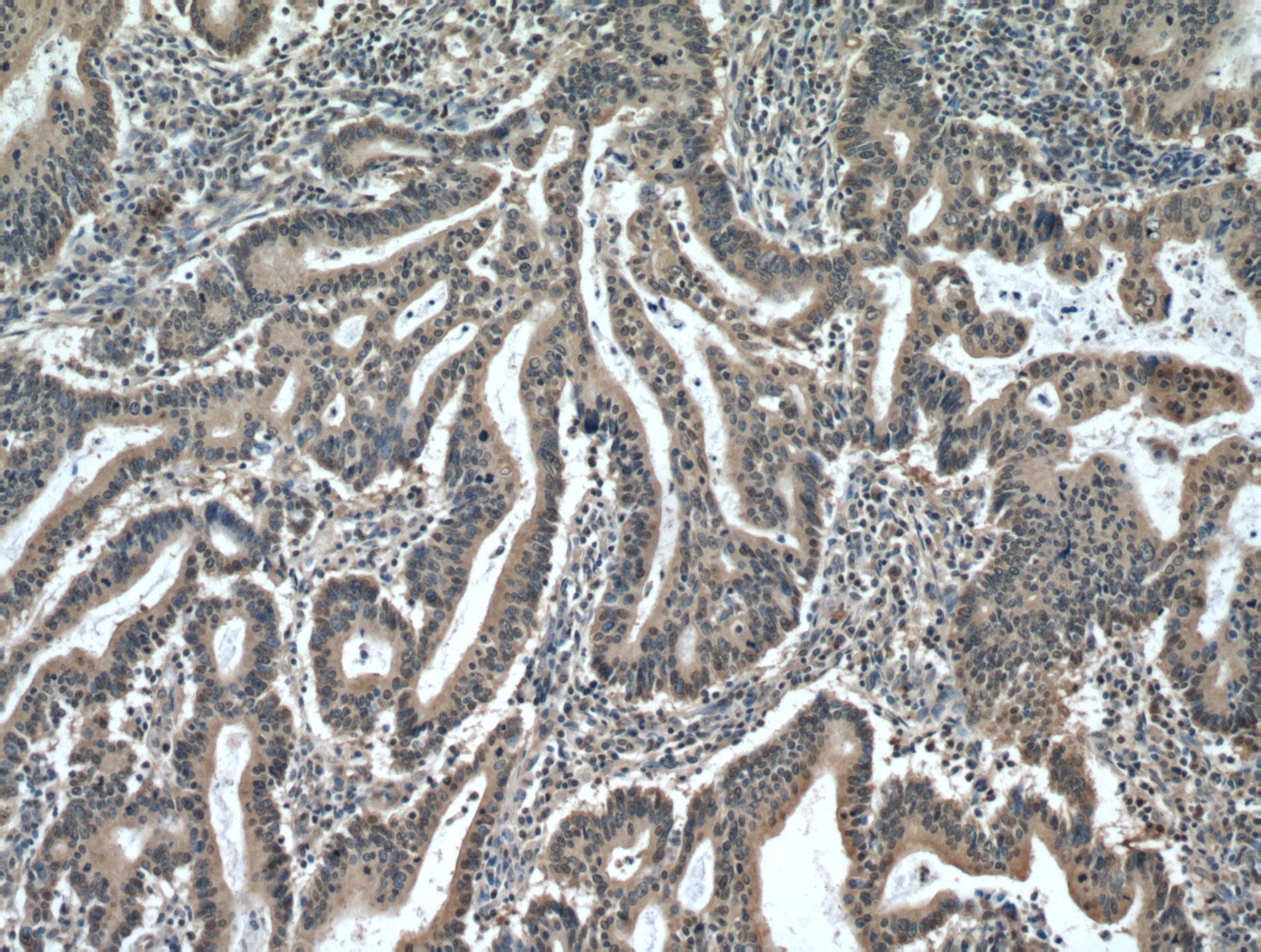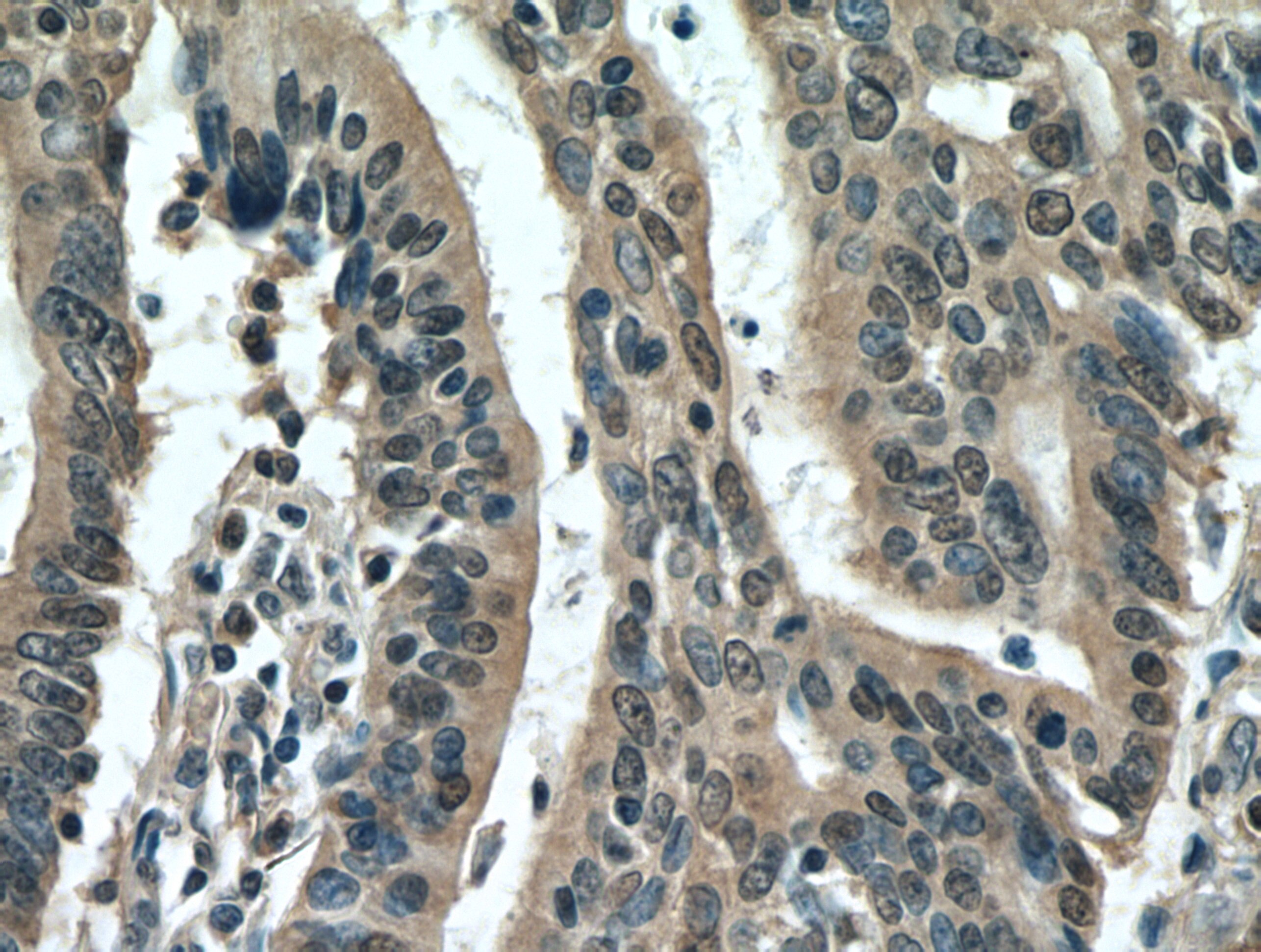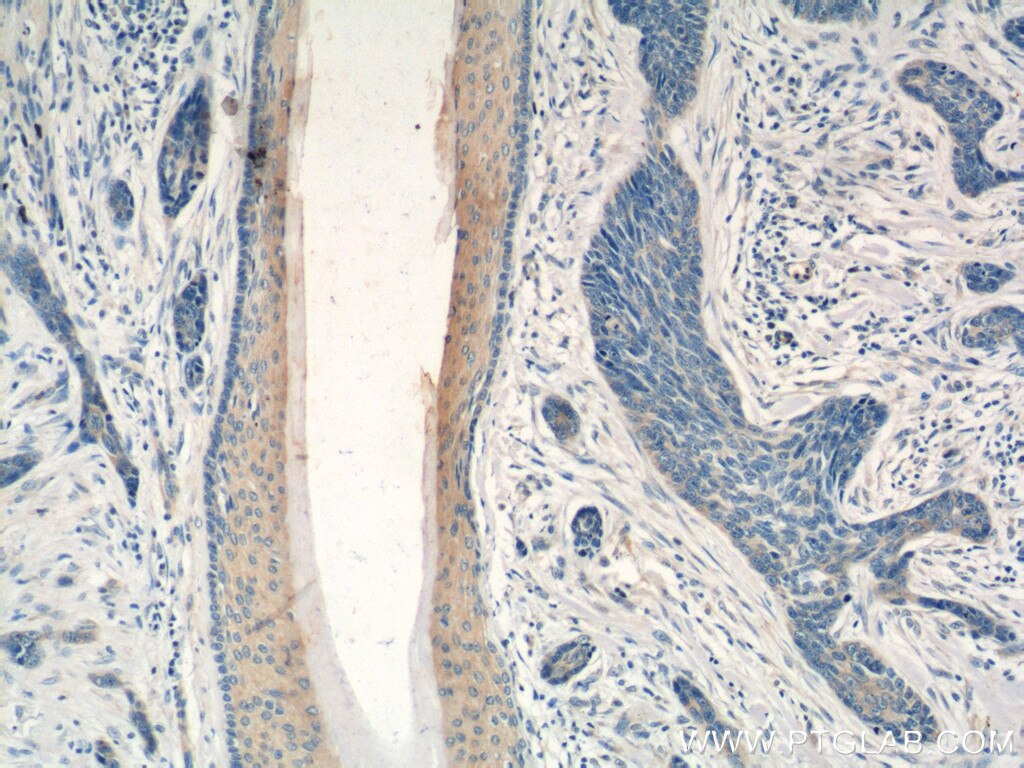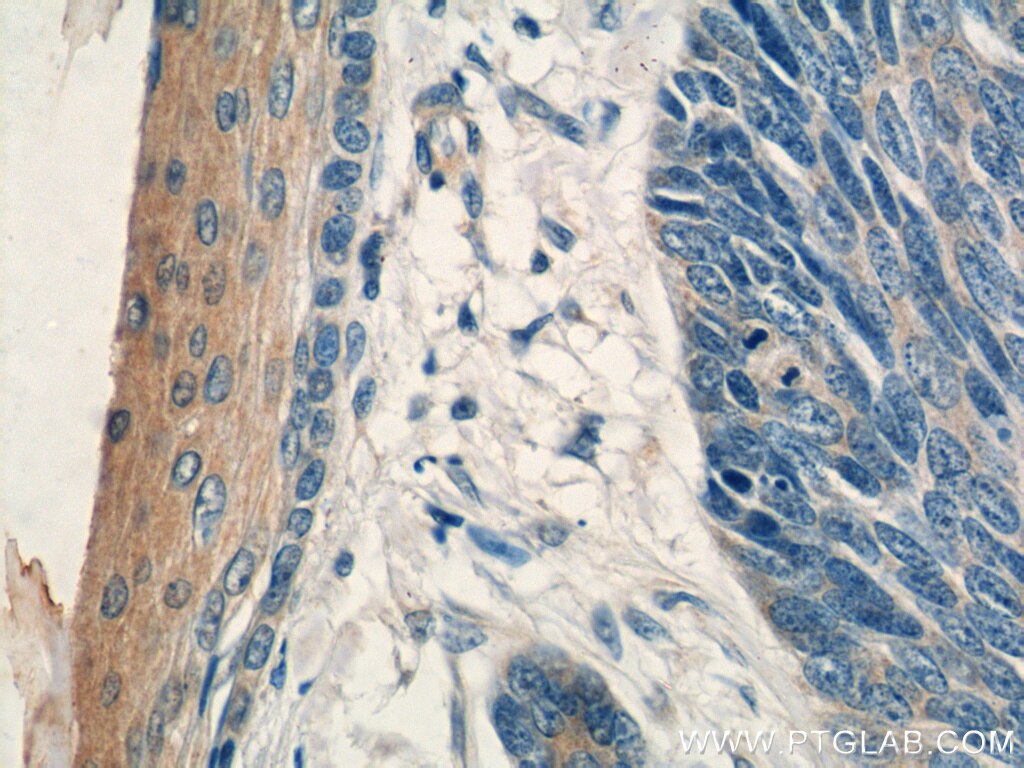Validation Data Gallery
Tested Applications
| Positive WB detected in | human heart tissue, PC-3 cells, human brain tissue, A549 cells |
| Positive IHC detected in | human endometrial cancer tissue, human skin cancer tissue Note: suggested antigen retrieval with TE buffer pH 9.0; (*) Alternatively, antigen retrieval may be performed with citrate buffer pH 6.0 |
Recommended dilution
| Application | Dilution |
|---|---|
| Western Blot (WB) | WB : 1:500-1:1000 |
| Immunohistochemistry (IHC) | IHC : 1:50-1:500 |
| It is recommended that this reagent should be titrated in each testing system to obtain optimal results. | |
| Sample-dependent, Check data in validation data gallery. | |
Published Applications
| KD/KO | See 3 publications below |
| WB | See 12 publications below |
| IHC | See 2 publications below |
| IF | See 3 publications below |
| IP | See 1 publications below |
Product Information
12456-1-AP targets PDCD5 in WB, IHC, IP, ELISA, IF applications and shows reactivity with human samples.
| Tested Reactivity | human |
| Cited Reactivity | human |
| Host / Isotype | Rabbit / IgG |
| Class | Polyclonal |
| Type | Antibody |
| Immunogen | PDCD5 fusion protein Ag3122 相同性解析による交差性が予測される生物種 |
| Full Name | programmed cell death 5 |
| Calculated molecular weight | 125 aa, 14 kDa |
| Observed molecular weight | 14 kDa |
| GenBank accession number | BC015519 |
| Gene Symbol | PDCD5 |
| Gene ID (NCBI) | 9141 |
| RRID | AB_2162450 |
| Conjugate | Unconjugated |
| Form | Liquid |
| Purification Method | Antigen affinity purification |
| UNIPROT ID | O14737 |
| Storage Buffer | PBS with 0.02% sodium azide and 50% glycerol , pH 7.3 |
| Storage Conditions | Store at -20°C. Stable for one year after shipment. Aliquoting is unnecessary for -20oC storage. |
Background Information
PDCD5, also called TFAR19 (TF1 cell apoptosis-related gene 19), was first identified as a gene up-regulated in TF-1 cells under-going apoptosis (PMID: 9920759). PDCD5 can promote pro-grammed cell death in different cell types in response to various stimuli and also enhance TAJ/TROY-induced paraptosis-like cell death (PMID: 15020679). During apoptosis, PDCD5 is rapidly upregulated and translocates from the cytoplasm to nucleus (PMID: 11741587). PDCD5 is a positive regulator of Tip60 and also has a potential ability to interact with p53 (PMID: 22914926, PMID: 19308289). Recent studies have also revealed that PDCD5 may be a suppressor gene and expressed at lower levels in many cancers, including hepatocellular carcinoma, breast cancer, gastric cancer, cervical cancer, lung cancer, astrocytic gliomas, and in leukemia.
Protocols
| Product Specific Protocols | |
|---|---|
| WB protocol for PDCD5 antibody 12456-1-AP | Download protocol |
| IHC protocol for PDCD5 antibody 12456-1-AP | Download protocol |
| Standard Protocols | |
|---|---|
| Click here to view our Standard Protocols |
Publications
| Species | Application | Title |
|---|---|---|
Nat Commun Programmed cell death 5 mediates HDAC3 decay to promote genotoxic stress response.
| ||
J Nanobiotechnology Multifunctional photodynamic/photothermal nano-agents for the treatment of oral leukoplakia. | ||
J Cell Physiol Thyroid stimulating hormone aggravates diabetic retinopathy through the mitochondrial apoptotic pathway. | ||
Sci Rep Protein serine/threonine phosphatase PPEF-1 suppresses genotoxic stress response via dephosphorylation of PDCD5. | ||
